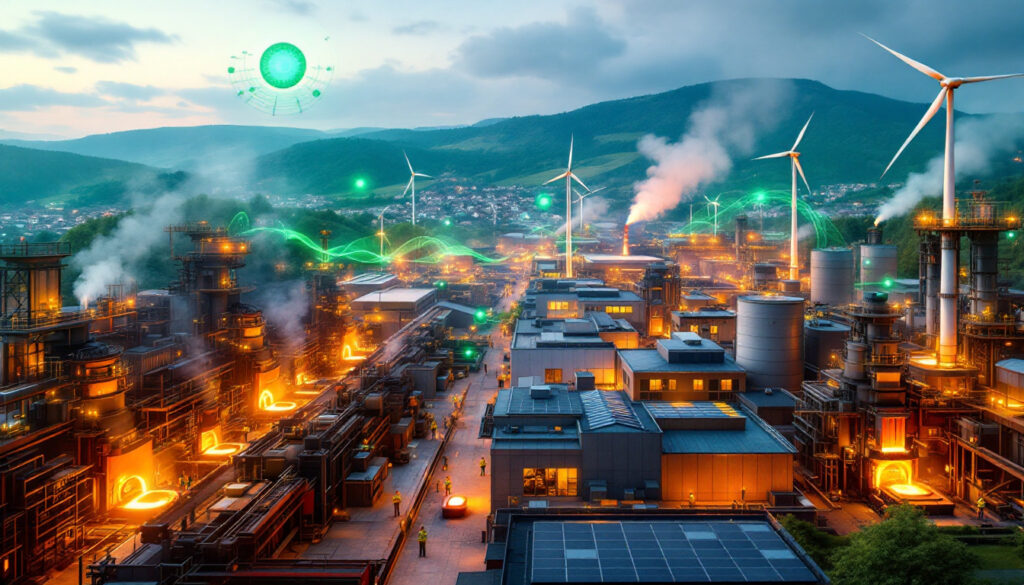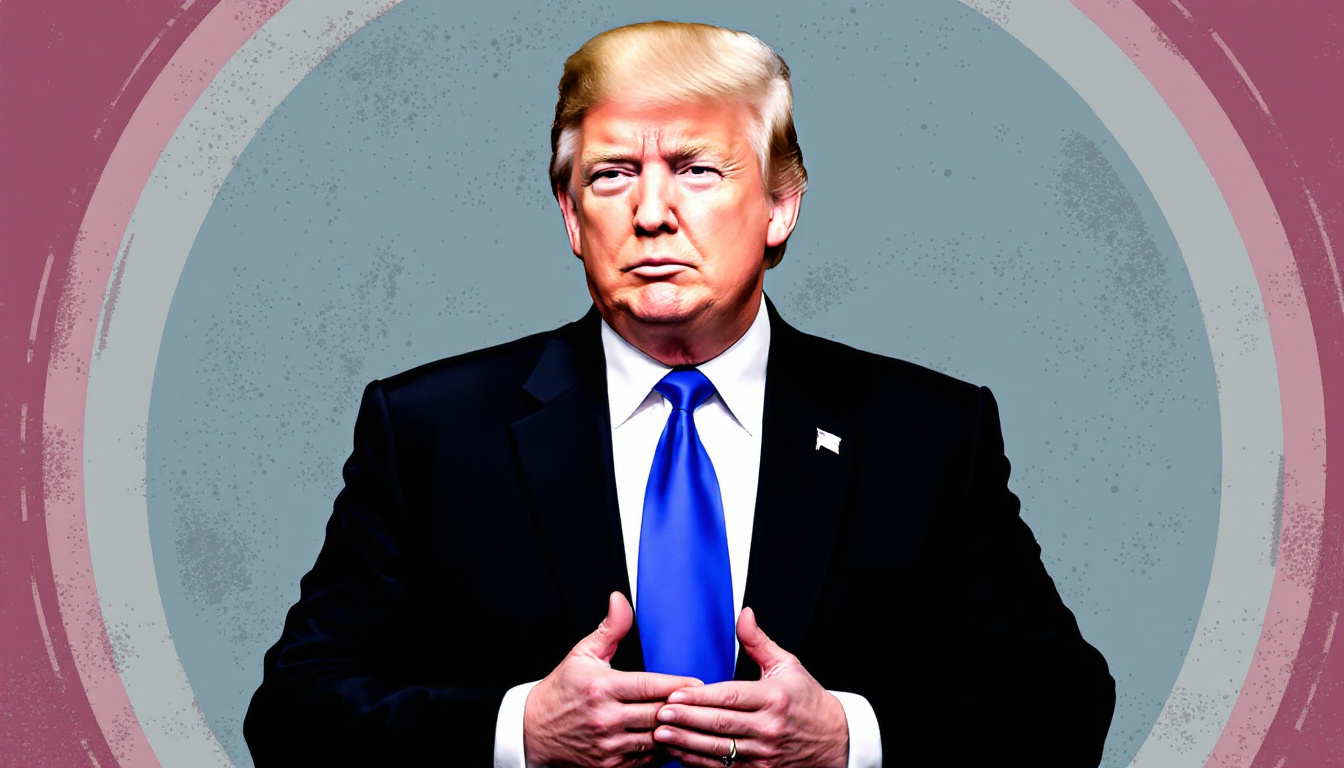## What is the EU Action Plan for Steel and Metals?
The European Commission has unveiled a comprehensive initiative called the EU action plan to strengthen steel and metals industry. This plan aims to safeguard and expand industrial capacities in the region. Moreover, it highlights the sectors as foundational pillars of the EU economy.
This strategic framework was launched after the automotive industry initiative in March 2023. It now acts as the second sector-specific industrial strategy. In addition, its focus on decarbonisation supports innovative decarbonization strategies in heavy industries.
Approximately 500 production sites across 22 member states benefit from this plan. These facilities contribute nearly €80 billion to the EU’s GDP. Consequently, the initiative reinforces European security interests and boosts long-term industrial resilience.
## Why is the EU Steel and Metals Industry at a Critical Juncture?
The sector stands at a decisive crossroads, facing various unprecedented challenges. Besides contributing significantly to the economy, the industry supports around 2.6 million jobs. Furthermore, its preservation is essential for social stability.
Energy costs for European producers are 40-60% higher than global competitors. This cost differential is due to structural factors and the recent energy crisis following Russia's invasion of Ukraine. In addition, global tariff impacts on industrial exports have disrupted traditional export markets.
Aggressive global competition further complicates matters. Asian producers, with substantial state support and lower environmental compliance costs, flood the market. Consequently, the industry must address market-distorting measures to maintain fair competition.
Simultaneously, producers invest billions in decarbonisation technologies. Maintaining competitiveness while investing in green transition is a dual challenge. Many companies risk carbon leakage if production shifts to less regulated regions.
## How Will the EU Address Energy Challenges for Metal Producers?
The plan introduces a multi-faceted approach to tackle energy cost disadvantages. At its foundation, the promotion of power purchase agreements (PPAs) offers long-term energy pricing stability. In addition, negotiation frameworks prioritise energy-intensive industries.
Member states are encouraged to utilise available energy tax flexibility options. This approach allows flexibility within EU frameworks while reducing operational costs. Moreover, targeted reductions in network tariffs ease the financial pressures on metal producers.
Accelerated grid connection processes further aid industrial users. In addition, fast-track approval mechanisms help prioritise projects that implement electrification technologies. For instance, new processes streamline approvals for connecting renewable energy systems.
The plan also emphasises renewable and low-carbon hydrogen adoption. Mandatory blending targets for industrial fuels create predictable demand. Consequently, targeted subsidies help ease the cost gap between conventional fuels and green hydrogen. An external source provides further eu commission details on this topic.
## What Carbon Leakage Prevention Measures Are Being Implemented?
The Commission has designed a sophisticated framework to prevent carbon leakage. This phenomenon occurs when production shifts to regions with lenient environmental rules. In consequence, scheduled communications in Q2 2025 will address protection for CBAM goods.
New long-term protective measures will be proposed after current safeguards expire in mid-2026. These measures comply with WTO regulations while maintaining competitive balance. In addition, public procurement systems support the Industrial Decarbonisation Accelerator Act.
This act promotes low-carbon metals through strategic government purchases. Consequently, European producers investing in decarbonisation benefit from reliable market demand. In parallel, the CBAM mechanism gradually replaces free emission allowances, creating a predictable pathway for the industry.
## How Does the Action Plan Support Industry Decarbonization?
Multiple complementary pathways drive decarbonisation efforts. Significant funding is dedicated to research and development for breakthrough technologies. In addition, investments include next-generation steelmaking processes such as hydrogen-based direct reduction of iron and electric arc furnaces.
Ambitious targets for recycled content in steel and aluminium are also set. The 2030 goal is 25% recycled steel and 50% recycled aluminium. These targets will drive investments in advanced sorting technologies and scrap processing facilities.
Furthermore, trade measures on metal scrap exports aim to retain high-quality resources within the European circular economy. This step supports producers transitioning to approaches to decarbonizing energy-intensive industries.
The plan integrates with existing initiatives such as the Clean Industrial Deal. In addition, the Action Plan for Affordable Energy creates a comprehensive support ecosystem. Consequently, decarbonisation efforts align with broader EU climate goals, including the EU action plan to strengthen steel and metals industry.
## What Trade Protection Measures Are Being Considered?
To ensure fair competition, the Commission has adopted a more assertive stance on trade protection. New long-term measures will take effect after current safeguards expire in 2026. Furthermore, these measures address market-distorting practices and global overcapacities.
Key initiatives focus on obstructing unfair state support and non-market pricing strategies. In addition, international co-operation is pursued through forums like the Global Arrangement on Sustainable Steel and Aluminium. As a result, the plan defends vulnerable sectors from the adverse effects of market distortions.
Anti-circumvention mechanisms have also been introduced. These aim to prevent metal scrap exports from leaving the European economy through third countries. In addition, the Commission is developing proportionate response strategies to counter unilateral tariffs.
Such measures support the industry’s competitive position and strengthen the EU action plan to strengthen steel and metals industry. Moreover, they contribute to global commodity stability. An external reuters steel market analysis offers additional insight into these measures.
## How Will the Action Plan Support Employment and Skills Development?
Workforce development is critical for successful industry transformation. Active labour policies focus on upskilling workers in regions dependent on traditional steel and metals manufacturing. In addition, targeted training programmes address technological shifts in production processes.
Support for fair job transitions is provided through the European Fair Transition Observatory. This observatory deploys regional labour market analytics and automated skills gap detection. Consequently, vulnerable worker populations can be identified and supported before major production shifts occur.
The Quality Jobs Roadmap ensures employment quality by focusing on securing family-supporting wages and career development. In addition, funding for retraining programmes enhances digital skills for Industry 4.0 environments. These initiatives safeguard valuable institutional knowledge.
Furthermore, strategic investments in human capital ensure that employee skills are continuously upgraded. This strategy is integral to the broader EU action plan to strengthen steel and metals industry and supports long-term sustainability in the sector.
## What Does This Mean for the Future of European Steel Production?
European Commission President Ursula von der Leyen famously stated, "Next-generation, clean steel should continue to be manufactured in Europe." This declaration underlines the commitment behind the plan and emphasises sustainable metal production. In addition, a target of 50 million tonnes annual clean steel capacity by 2030 is set.
Achieving this target will require coordinated investment across multiple technologies. For instance, hydrogen-DRI systems, electric arc furnaces, and carbon capture applications are essential. Furthermore, European steel will position itself as a premium product with distinctive environmental credentials.
By differentiating on sustainability rather than price, the industry counters the influx of high-carbon imports. In addition, the plan strengthens strategic domestic production capabilities to reduce vulnerabilities from global supply disruptions. Ultimately, the EU action plan to strengthen steel and metals industry serves as a transformative blueprint for the future.
## FAQ: Key Questions About the EU Steel and Metals Action Plan
1. What specific funding is allocated for industry transformation?
The plan sets up a €20 billion modernisation fund for the 2025-2027 phase. Funding is drawn from the Innovation Fund, InvestEU, and national programmes. In addition, preferential loan terms from the European Investment Bank are available for decarbonisation projects meeting emissions criteria.
2. How will the plan address competition from non-EU producers?
A three-pronged approach will be used:
- Implementing CBAM to level carbon cost differences.
- Developing targeted trade defence instruments.
- Pursuing international co-operation via sustainable steel forums.
These mechanisms ensure that European producers compete fairly while maintaining environmental standards.
3. What timeline exists for the implementation of various measures?
The plan follows a phased rollout starting in 2025. Immediate support measures are followed by CBAM export guidance in Q2 2025. New safeguards come into effect by mid-2026, with full carbon border adjustments scheduled between 2028 and 2030.
4. How does this plan align with broader EU climate objectives?
It directly supports the European Green Deal. The plan enforces sectoral emission reduction pathways aligned with targets for 2030 and 2050. Performance metrics include reductions in carbon intensity, increased renewable energy usage, and improved circular material rates.
5. What metrics will be used to measure the plan's success?
Success is evaluated through:
- Energy cost reduction per tonne of steel.
- Carbon intensity improvements.
- Retained export market share.
- Employment stability in affected regions.
- Investment levels in decarbonisation technologies.
Regular progress reports will monitor these indicators and help adjust policies as needed.
Throughout the article, the EU action plan to strengthen steel and metals industry has been presented as a comprehensive and transformative initiative aimed at securing the future of Europe’s heavy industries. Furthermore, each strategy outlined in this plan reinforces a commitment to sustainable growth and competitiveness for decades to come.
Want to stay ahead of major mineral discoveries on the ASX?
Discover tomorrow's mining winners today with Discovery Alert's proprietary Discovery IQ model, delivering real-time notifications on significant ASX mineral discoveries directly to your inbox. Visit our discoveries page to understand how early identification of mineral discoveries can lead to exceptional investment returns.




